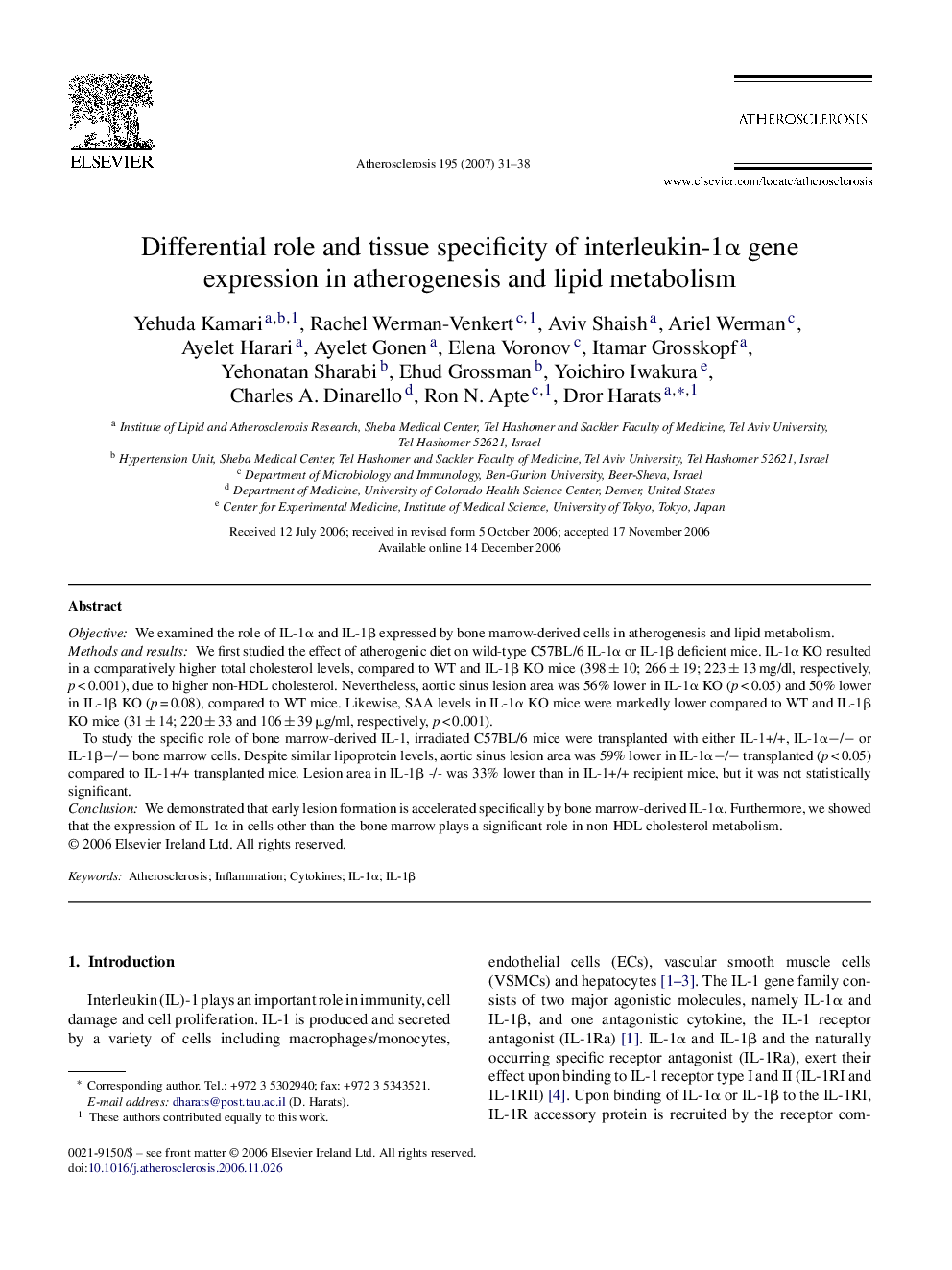| Article ID | Journal | Published Year | Pages | File Type |
|---|---|---|---|---|
| 2894246 | Atherosclerosis | 2007 | 8 Pages |
ObjectiveWe examined the role of IL-1α and IL-1β expressed by bone marrow-derived cells in atherogenesis and lipid metabolism.Methods and resultsWe first studied the effect of atherogenic diet on wild-type C57BL/6 IL-1α or IL-1β deficient mice. IL-1α KO resulted in a comparatively higher total cholesterol levels, compared to WT and IL-1β KO mice (398 ± 10; 266 ± 19; 223 ± 13 mg/dl, respectively, p < 0.001), due to higher non-HDL cholesterol. Nevertheless, aortic sinus lesion area was 56% lower in IL-1α KO (p < 0.05) and 50% lower in IL-1β KO (p = 0.08), compared to WT mice. Likewise, SAA levels in IL-1α KO mice were markedly lower compared to WT and IL-1β KO mice (31 ± 14; 220 ± 33 and 106 ± 39 μg/ml, respectively, p < 0.001).To study the specific role of bone marrow-derived IL-1, irradiated C57BL/6 mice were transplanted with either IL-1+/+, IL-1α−/− or IL-1β−/− bone marrow cells. Despite similar lipoprotein levels, aortic sinus lesion area was 59% lower in IL-1α−/− transplanted (p < 0.05) compared to IL-1+/+ transplanted mice. Lesion area in IL-1β -/- was 33% lower than in IL-1+/+ recipient mice, but it was not statistically significant.ConclusionWe demonstrated that early lesion formation is accelerated specifically by bone marrow-derived IL-1α. Furthermore, we showed that the expression of IL-1α in cells other than the bone marrow plays a significant role in non-HDL cholesterol metabolism.
